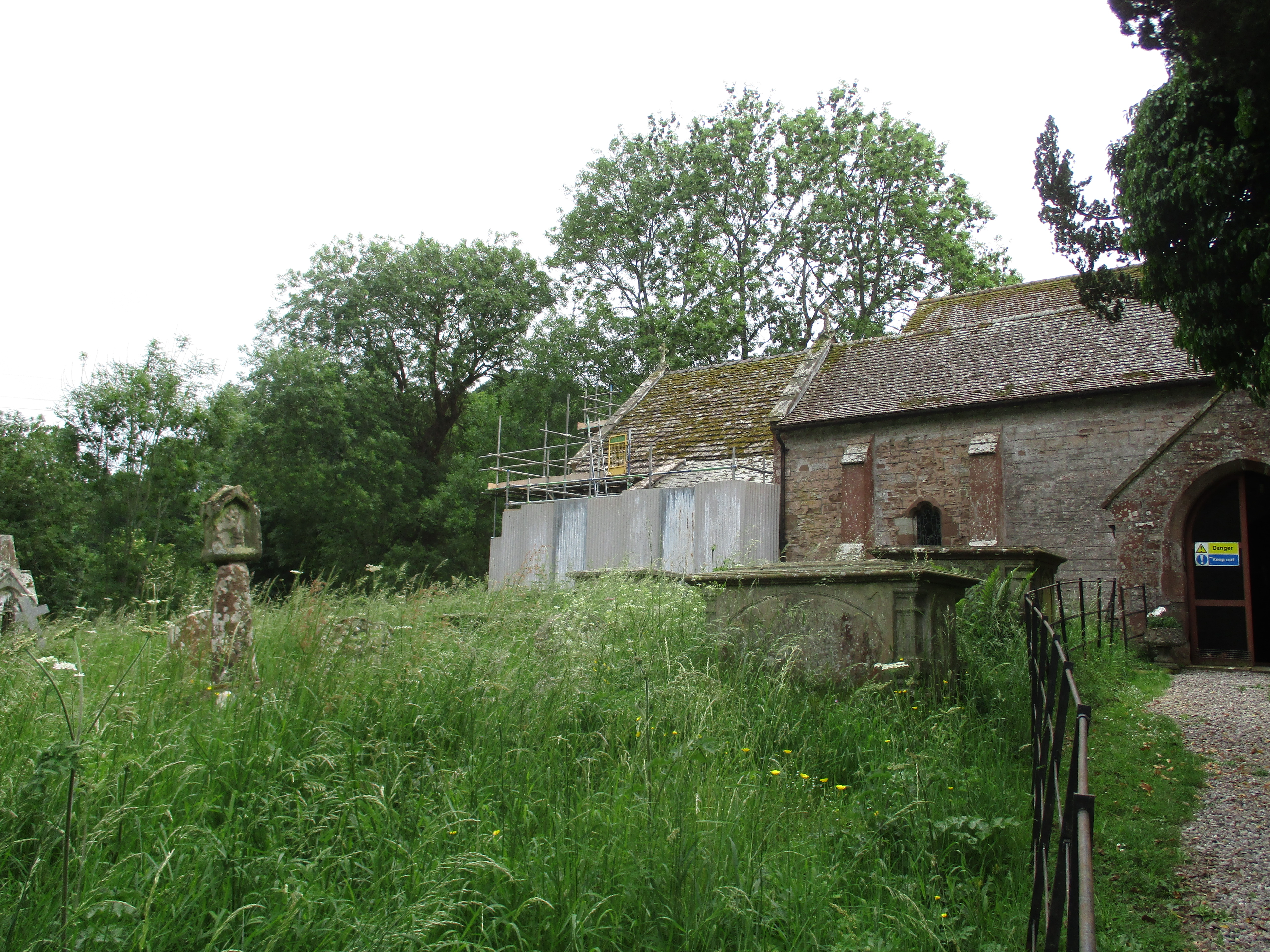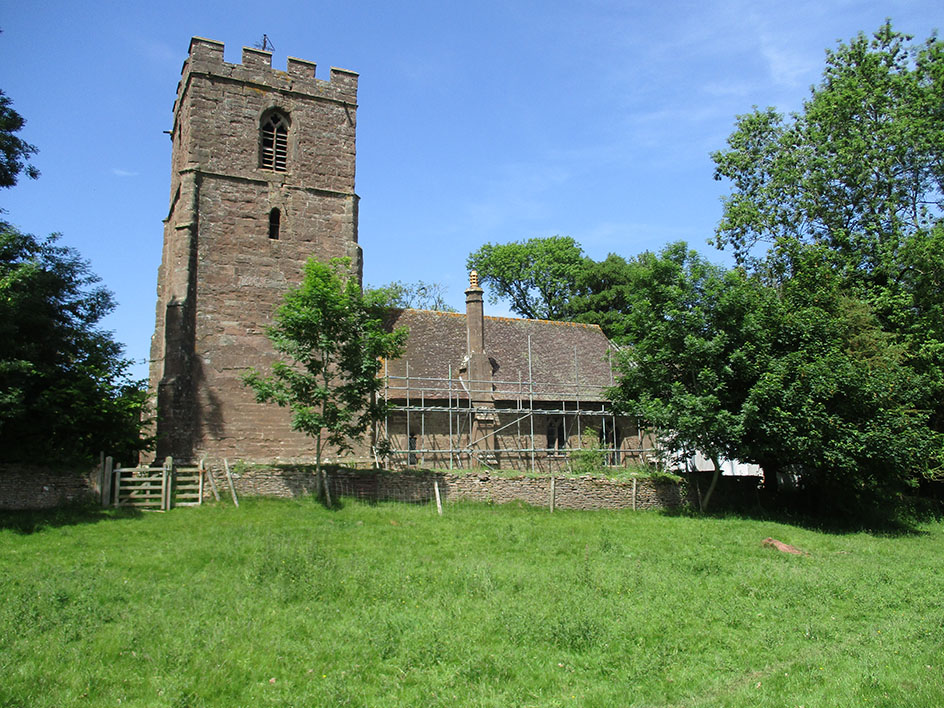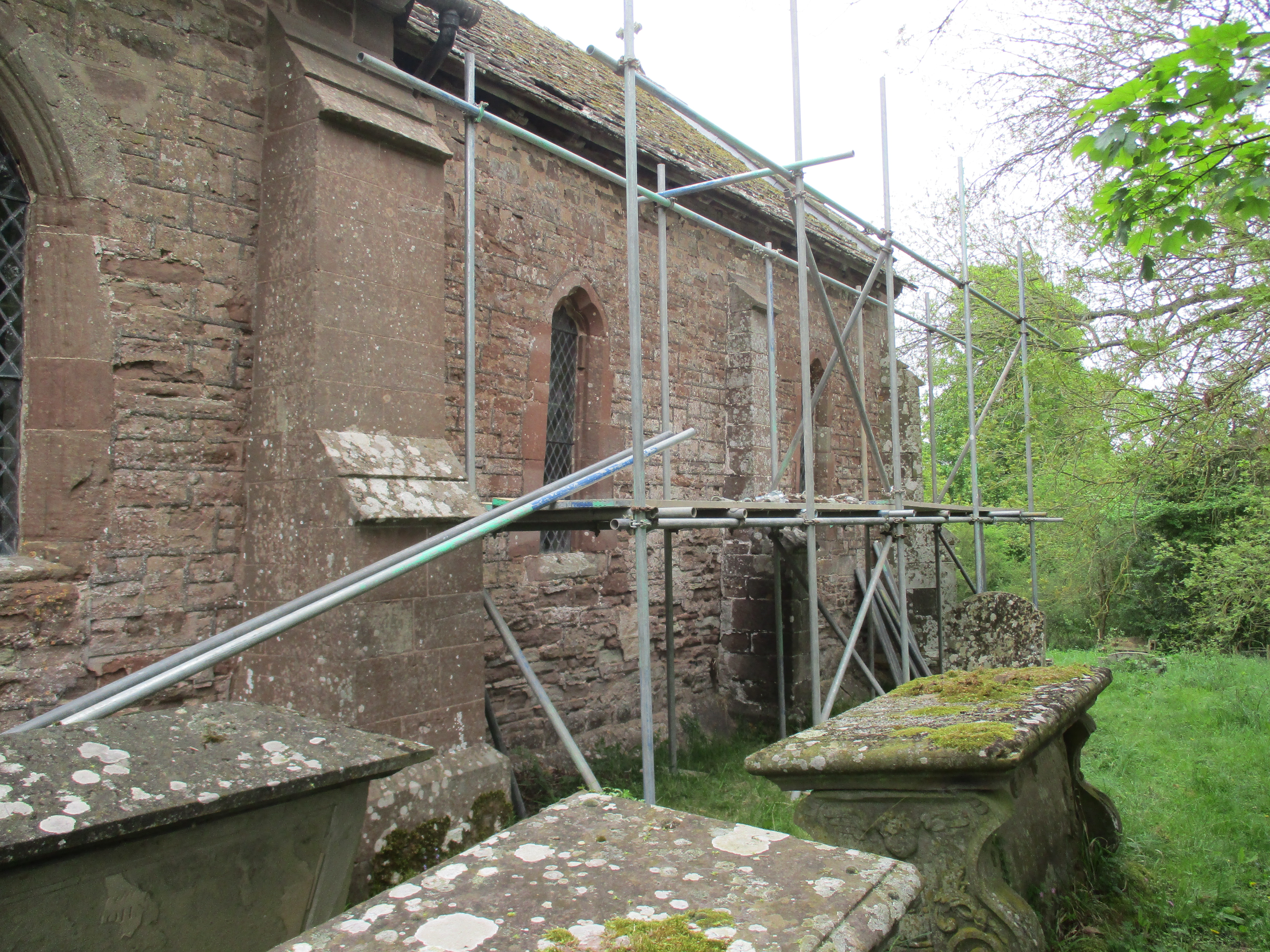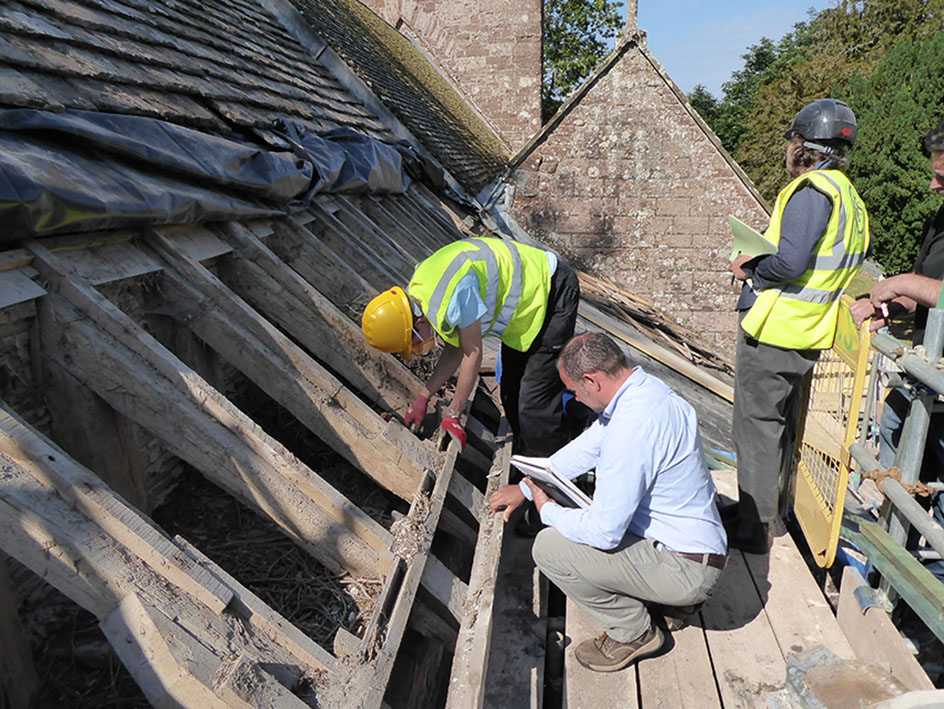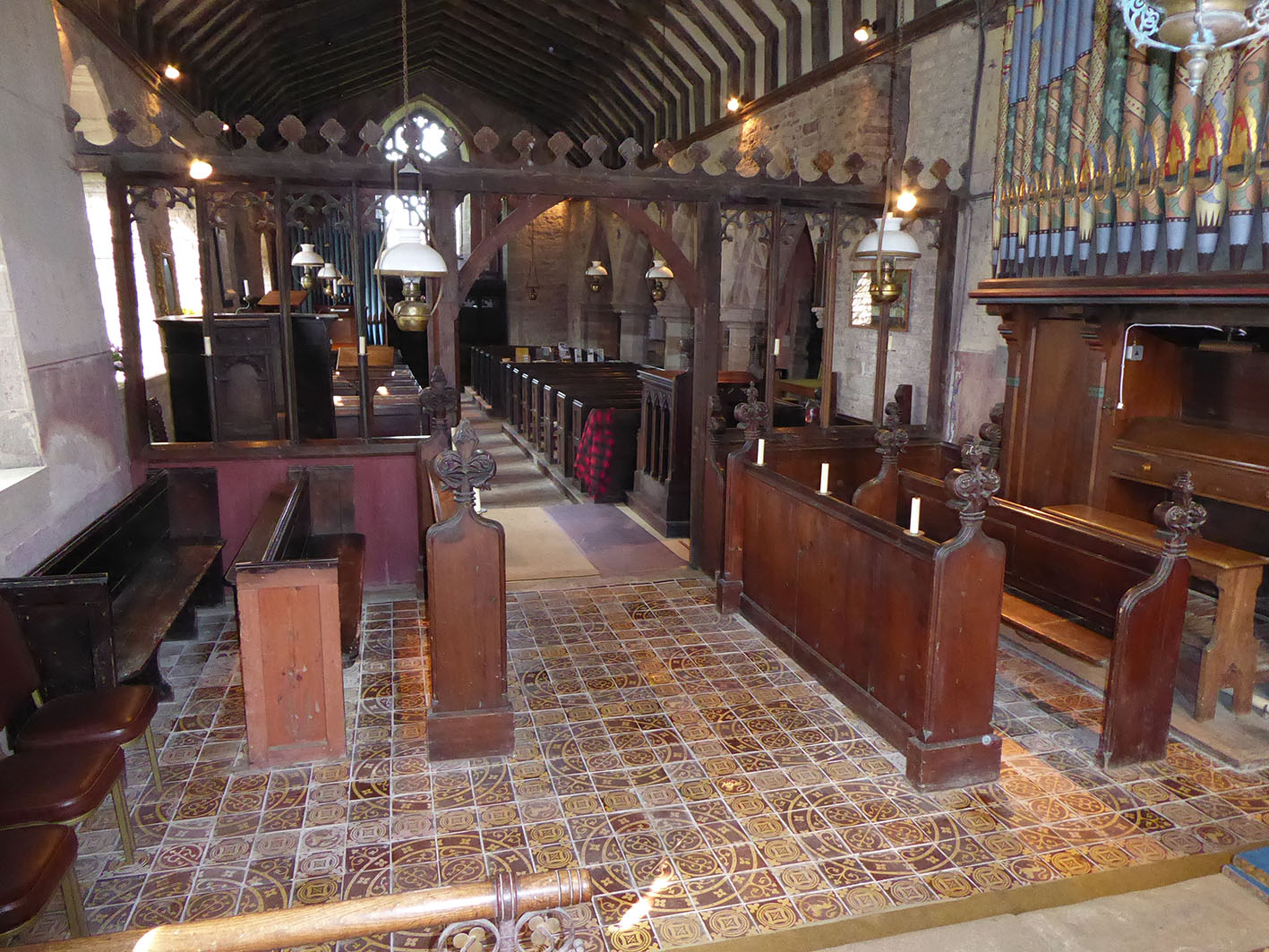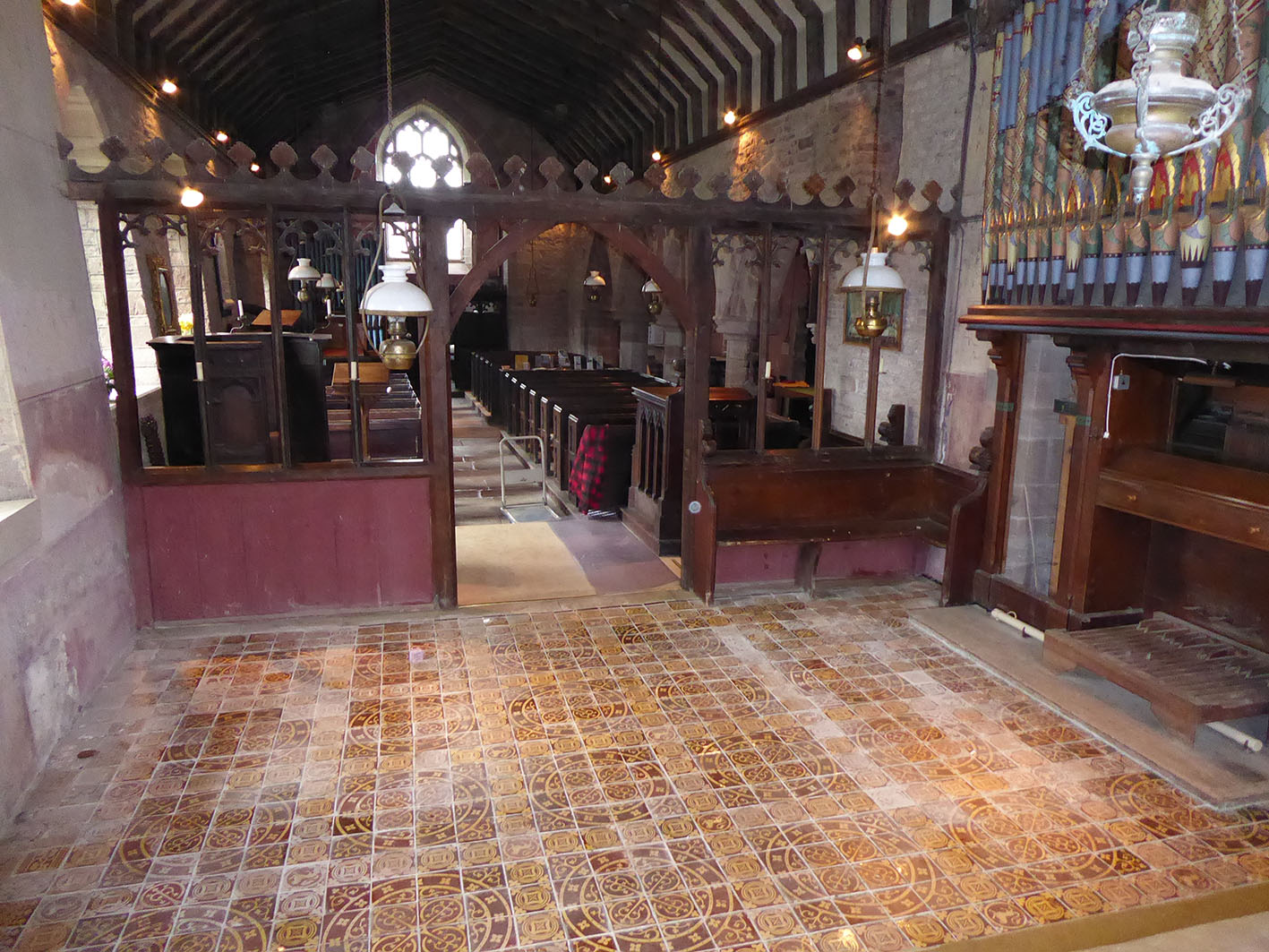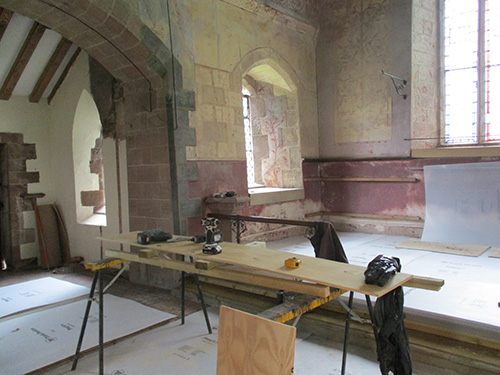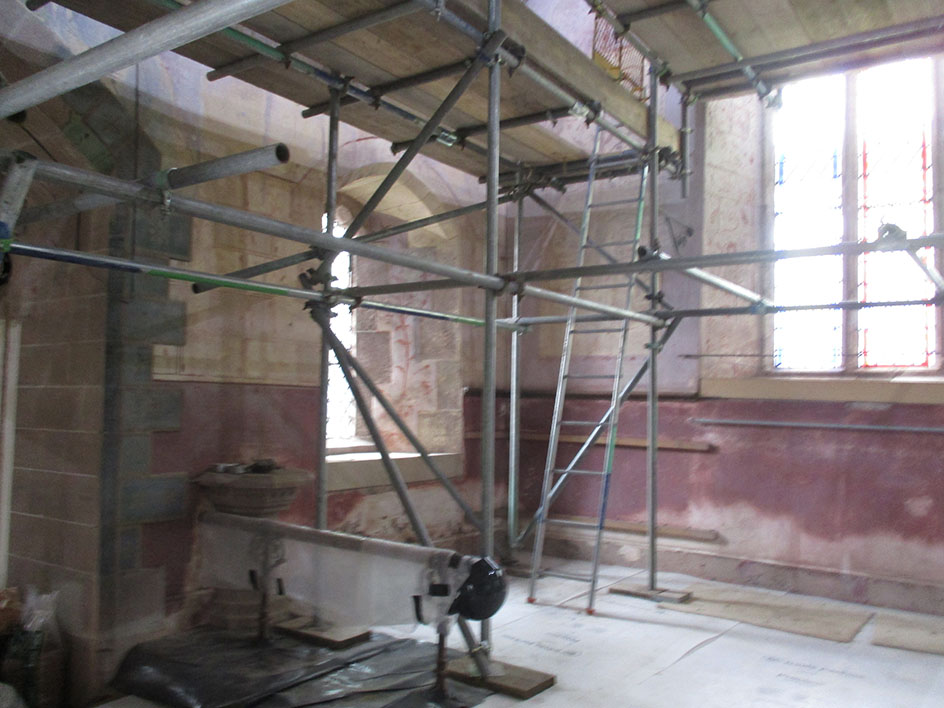external work in progress
Hentland is a large parish in south Herefordshire. The parish church, St Dubricius, is now almost isolated, accessible by just one road. There are few other buildings near the church.
Dubricius is not a common dedication; but here it could hardly be more appropriate. Dubricius is the Latin form of the Welsh name Dyrig. Dyfrig was the evangelist of the area, and the first bishop in a line which is now repesentd by the Bishop of Llandaff. Within the parish is the site of a teaching monastery which Dyfrig founded near the banks of the Wye at Llanfrother.
St Dubricius is a church of the 13th and 14th centuries, drastically restored by J P Seddon in the mid 19th century. Seddon also redecorated the chancel with a spectacular scheme of painted plaster in the chancel. Seddon was commissioned by the wealthy parish priest, the Reverend William Poole.
Over the years this decorative scheme had become very much faded, and fragile to the point where it was starting to crumble and fall off. The chancel walls had over the years allowed damp to penetrate to the detriment of the plaster layer and its decoration. These were the circumstances which inspired the Hentland Church Renovation Project. A succesful application for funding was made to the Heritage Lottery Fund and the renovation project was carried out by Sally Strachey Conservation.
To allow the decorated plaster to be worked on in the chancel, it would be necessary to remove the fine two-manual J W Walker organ, installed in 1869, which would provide an opportunity to restore the instrument to full working order. The organ was donated by the Rev Symonds of Pengethley at the time of Seddons restoration. So now that the project has been completed the church has been returned to the condition that it was in the 1860s.
A series of complimentary activities was arranged to run in parallel with the renovation of the fabric of the church and its decorative scheme.These included guided walks and documentary research.
internal work in progress
The project design was complicated by the discovery of brown long-eared bats (Plecotus auritus) roosting in the chancel roof, which were liable to be disturbed by the work. Fortunately no bats were present in the Walker organ in the chancel, so there would be no interruption of the work on either the organ or the decorated plaster. However, as space behind the decorated plaster was revealed, it became apparent that the whole chancel roof would need to be restored, with up to 70% of the stone tiles and one of the rafters needing to be replaced. The presence of the bats meant that the work could only be carried out in two periods in a year: after hibernation, in March and April, and after breeding and maternity, in October and November.
A survey carried out by Swift Ecology in September 2018 identified three species of bat: brown long-eared (Plecotus auritus), common pipistrelle (Pipistrellus pipistrellus) and lesser horseshoe (Rhinolophus hipposideros), but of these, the brown long-eared bats were the only ones with a roost in the chancel roof, which were liable to be disturbed by the work.
In order to carry on the work a Bat Mitigation Licence had to be acquired. This licence has now been extended and is valid for five years ending 13th December 2023, although any work which was likely to disturb them has now been completed. Work on the church was only permitted during two periods in a year: after hibernation, in March and April, and after breeding and maternity, in October and November. The J W Walker organ was dismantled, and worked on off-site so that once work on the chancel was finished, the organ could be rebuilt. This was originally planned to be completed by the end of 2019, which was be the instrument's 150th anniversary, it having been originally built in 1869. First, structural complications discovered during the early phases of the work, and then Covid 19, set back the whole programme considerably.
As space behind the decorated plaster was revealed, it became apparent that the whole chancel roof would need to be restored, with up to 70% of the stone tiles and one of the rafters needing to be replaced.
On the east wall the painting of the genealogical tree from Adam to Abraham has also been restored but the text around the window arch is hard to decipher! The conservators understand the east wall paintings to be of a later date of around 1867 and that the earlier painted roof timbers were added with golden stars by Seddon.
